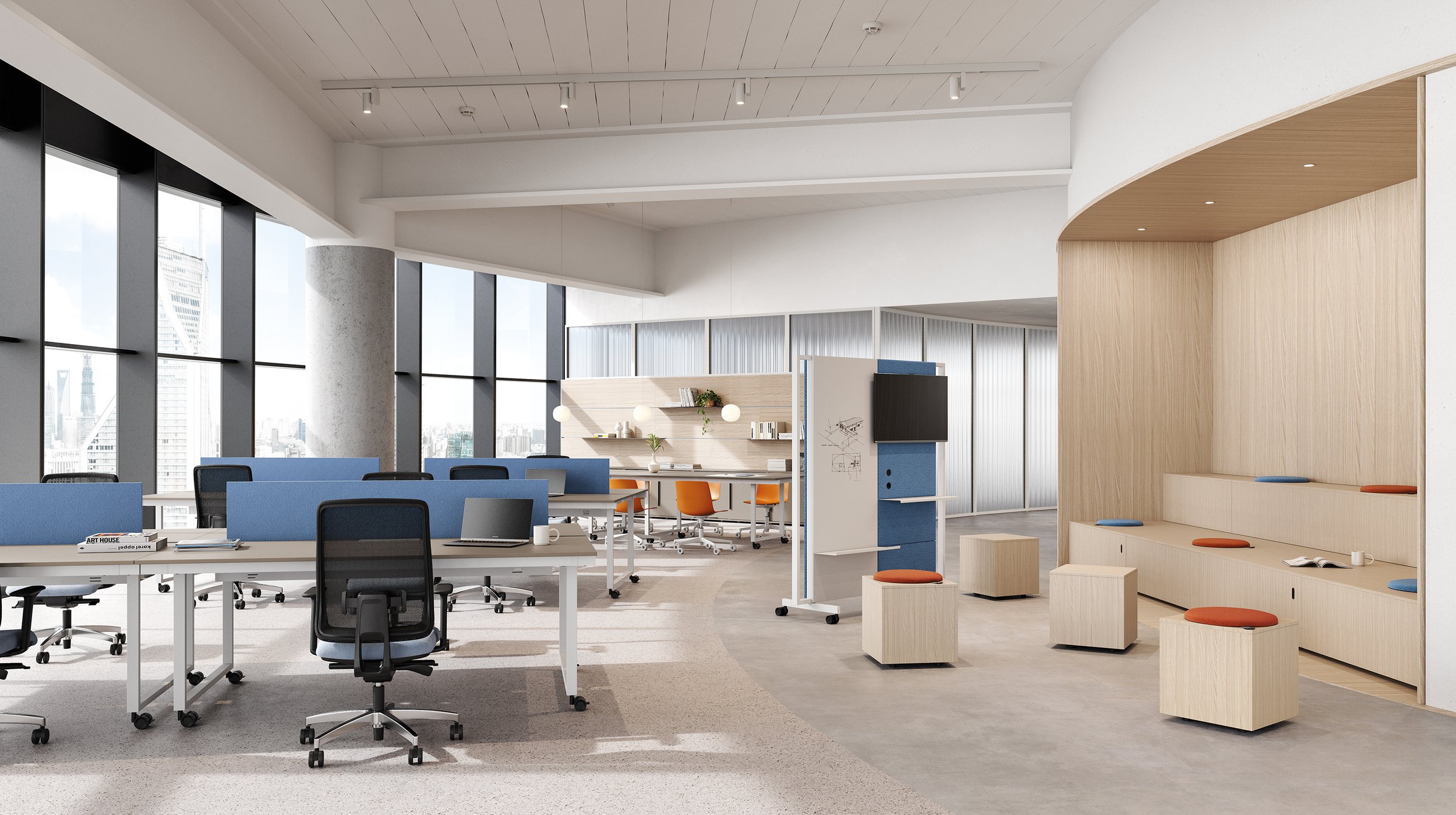Transforming Workspaces: How Strategic Office Design Boosts Business and Employee Well-being
Introduction In today's business world, the design of an office goes beyond mere aesthetics. It's about crafting environments that not only reflect a company's brand but also enhance employee productivity and well-being. This article explores the multifaceted benefits of strategic office design, from boosting business performance to promoting sustainability.
1. Enhancing Employee Engagement and Productivity Office design plays a crucial role in employee performance. By fostering an environment that supports collaboration and comfort, businesses can see a marked improvement in productivity and employee satisfaction. Modern designs that incorporate flexibility, such as adjustable workspaces and communal areas, cater to diverse needs and working styles, creating a more dynamic and responsive environment .
Workspace desking and collaboration space
2. Economic Efficiency through Design Investing in intelligent office design can significantly reduce operating expenses. Efficient space utilization not only cuts down rental costs but also optimizes energy use, which can lead to substantial savings in the long run. By incorporating green design principles, companies not only enhance their sustainability credentials but also ensure long-term economic benefits .
3. Reflecting Brand Identity and Culture An office is a physical manifestation of a company's brand and culture. The right design aligns with the company’s ethos and communicates its values to both employees and visitors. Whether it’s through the strategic use of company colors or the layout that reflects open communication, the design can serve as a powerful tool for brand reinforcement .
4. Compliance and Sustainability: A Dual Focus Today's office designs are also focused on compliance and sustainability. Ensuring that designs meet all regulatory requirements is as crucial as integrating sustainable practices. From energy-efficient lighting to materials that reduce the office's carbon footprint, every element counts towards making a workplace eco-friendly and compliant with the latest standards .
5. The Role of Technology in Modern Office Designs In the digital age, integrating technology into office design is non-negotiable. Smart offices with IoT-enabled devices can enhance the functionality of the workspace while ensuring that the office design remains adaptable to future technological advancements. This approach not only improves operational efficiency but also helps attract tech-savvy talent .
Conclusion The design of an office is a critical factor that influences company culture, employee productivity, and overall business success. As we move forward, the importance of a well-thought-out office design that balances aesthetic appeal with functionality and sustainability will only grow stronger. For businesses looking to the future, rethinking office space is not just an option; it's a necessity.

